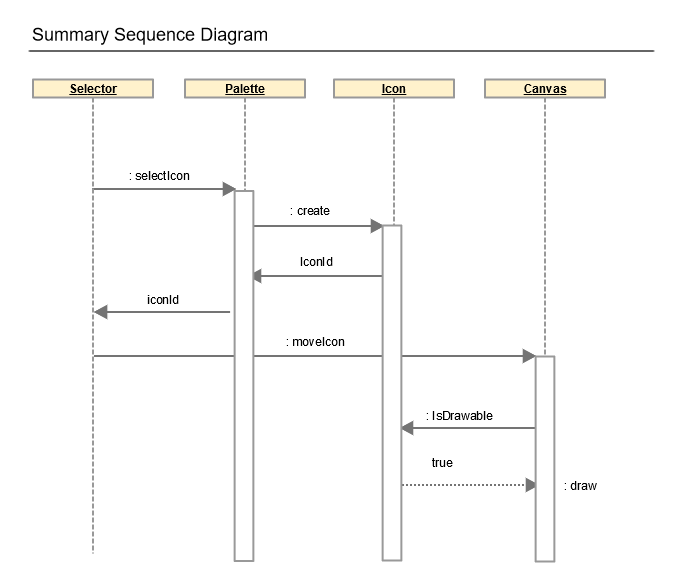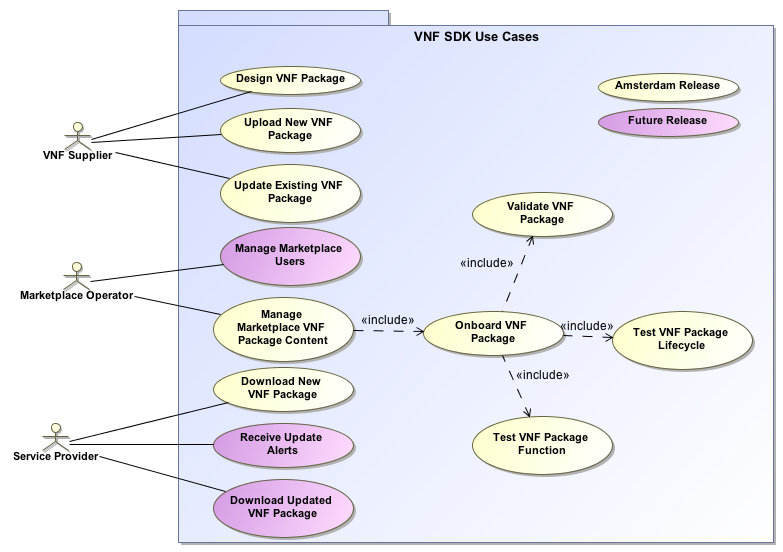Use Case Overview & Description
The objective of this case is to develop an ONAP-based SON platform using the ONAP Optimization Framework (OOF). The use case focuses on the various information models and flows/interfaces between components to enable various SON functions to be realized. It also focuses on platform enhancements such as enhancements to the Control Loop framework (e.g., Control Loop Co-ordination, different types of targets for Control Loops, etc.), enabling ML-based SON, etc.
Use Case Key Information
| TOPIC | DESCRIPTION | WIKI PAGE |
| Requirements Proposal | This is a link to the requirements proposal made on the Requirements Sub-committee | 5G_OOF_SON_usecase_vF2F_rqmts_subcommittee.pptx |
| Architecture S/C info | Information on the Architecture sub-committee presentation | ONAPARC-666 - Getting issue details... STATUS ONAP_OOF_SON_R8_ArchCom_v1.0.pptx Wiki page ONAP-based SON for 5G networks: Honolulu Architecture Review |
| Prior Project "Base" Wiki | Link to the Frankfurt release page for this use case | |
| Requirements Jira (REQ-###) Ticket | Link to the REQ Jira ticket for this use case | REQ-429 - Getting issue details... STATUS |
| Key Use Case Leads & Contacts | USE CASE LEAD: N.K. Shankaranarayanan , Swaminathan Seetharaman USE KEY CONTACTS: | |
| Meetings Register & Recordings | Link to Use Case Team meetings. |
|
BUSINESS DRIVER
Executive Summary
SON (Self-Organizing Networks) functionality is an essential part of existing 4G mobility networks, and will be even more critical for 5G. SON enables automation to improve network performance and efficiency, improve user experience, and reduce operational expenses and complexity. The objective of the OOF-SON (new name for OOF-PCI) use case is to develop an ONAP-based SON platform using the ONAP Optimization Framework (OOF). We have taken a phased approach since SON is complex, and SON for 5G is still evolving. We started with the Physical Cell Identity (PCI) optimization SON use case in Casablanca, then added some centralized Automated Neighbor Relations (ANR) aspects in Dublin. For Frankfurt, we will address gaps such as PCI assignment during new cell addition, alignment with RAN inventory, etc., In addition, we aim to have enhancements such as: additional optimization functionality (e.g. include the use of AI/ML), use of control loop co-ordination in Policy, and alignment with industry trends for open interfaces and open models for the RAN interactions.
Business Impact
SON is an essential feature in mobility networks, and relevant to every operator. Any ONAP-based network deployment for 5G will benefit from an ONAP-based SON solution, which provides a disaggregation of SON functions into modules aligned with the ONAP architecture. Operators and vendors will both benefit from the ability of vendors to bring best-in-class solutions to each module, while leveraging the benefits of a community-supported open platform. This will enable faster development of innovative solutions. The approach taken could very well be evolved to address SON use cases whose scope extends beyond just the RAN.
Business Markets
SON for 5G is relevant to all 5G operators and markets.
Funding/Financial Impacts
SON functions reduce Opex since the automated self-organizing functions are an efficient approach to continuously optimize network configurations to improve performance and respond to network conditions.
Organization Mgmt, Sales Strategies
There are no additional organizational management or sales strategies for this beyond whatever is required for ONAP deployment to support 5G.
Development Status
| PROJECT | PTL | User Story / Epic | Requirement |
| A&AI | No impact | ||
| AAF | No impact | ||
| APPC | No impact | ||
| CLAMP | No impact | ||
| CC-SDK | CCSDK-2392 - Getting issue details... STATUS | Incorporate new Yang model, new VES message, and possibly interface to new CPS | |
| DCAE | DCAEGEN2-2522 - Getting issue details... STATUS | Minor enhancements in SON-Handler MS | |
| DMaaP | No impact | ||
| External API | No impact | ||
| HOLMES | No impact | ||
| MODELING | No impact, CPS related modeling aspects will be covered by CPS project | ||
Multi-VIM / Cloud | No impact | ||
| OOF | No impact, enhancements deferred to I-release | ||
| OOM | No impact | ||
| POLICY | No impact | ||
| PORTAL | No impact | ||
| SDN-C | No impact | ||
| SDC | No impact | ||
| SO | No impact | ||
| VID | No impact | ||
| VF-C | No impact | ||
| VNFRQTS | No impact | ||
| VNF-SDK | No impact | ||
| CDS | No impact | ||
| CPS | CPS-86 - Getting issue details... STATUS | Models, and interface to store/retrieve OOF SON use case related data |
List of PTLs:Approved Projects
*Each Requirement should be tracked by its own User Story in JIRA
USE CASE DIAGRAM
Use cases define how different users interact with a system under design. Each use case represents an action that may be performed by a user (defined in UML as an Actor with a user persona).
Use Case Functional Definitions
Use Case Title | Title of the Use Case |
Actors (and System Components) | The list of Actors and System Components that participate in the Use Case |
Description | Short overview of the Use Case |
Points of Contact | Authors and maintainers of the Use Case. Use Case Lead, Key Use Case members and code contributors. |
Preconditions | A list of conditions that are assumed to be true before the Use Case is invoked Includes description of Information Consumed |
Triggers / Begins when | Describes the trigger for beginning the Use Case |
Steps / Flows (success) | Describes the sequence of steps and interactions that occur during the Use Case (may include: description, data exchanges, functionality, state changes) Interaction diagrams may be included or referenced |
Post-conditions | The expected results of the execution of the Use Case Includes description of Information Produced |
Alternate / Exception Paths | Description of any exceptions or special process that could occur during Use Case |
Related Use Cases | List of the Use Cases referenced by this Use Case |
Assumptions | Describes any assumptions that are made for this use case |
Tools / References / Artifacts | List of any tools or reference material associated with this Use Case as well as any JIRA trace-ability. List of any associated diagrams or modelling artifacts associated with the Use Case |
TESTING
Current Status
Testing Blockers
- High visibility bugs
- Other issues for testing that should be seen at a summary level
- Where possible, always include JIRA links
End to End flow to be Tested
**This should be a summary level Sequence diagram done in Gliffy**

Test Cases and Status
| 1 | There should be a test case for each item in the sequence diagram | NOT YET TESTED |
| 2 | create additional requirements as needed for each discreet step | COMPLETE |
| 3 | Test cases should cover entire Use Case | PARTIALLY COMPLETE |
Supporting Files
| Date | Description | File |
|---|---|---|
| Feb 04, 2021 | Presentation and Guilin demo given at LFN DDF | |
| Dec 08, 2020 | Presentation given to ArchCom | |
| Oct 15, 2020 | Presentation given at LFN vF2F on Honolulu requirements & Roadmap (in detail) Recording: See here. |
